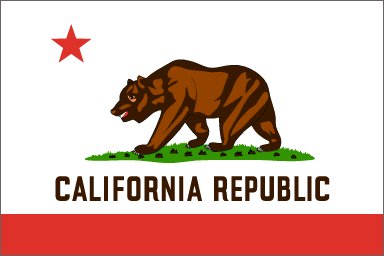Golden, Grizzly or Brown Bear
Published on January 6th, 2014
By whatever name, Ursus arctos survives and thrives only in areas with few humans
As a kid, I was fascinated with the wooly mammoth (Mammuthus primigenius). It was tough to accept that I would never actually get to see one alive, since they went extinct about 10,000 years before I was even born, as the Ice Age slowly released North America from its frozen embrace.
 It was tougher still to accept the growing paleontological evidence that overhunting by my own species – perhaps even some of my own ancestors – may have driven mammoths extinct here and in Eurasia.
It was tougher still to accept the growing paleontological evidence that overhunting by my own species – perhaps even some of my own ancestors – may have driven mammoths extinct here and in Eurasia.
Fortunately for me, another large and magnificent object of my fascination – the grizzly bear – then known judgmentally as Ursus horribilus to taxonomists, now renamed Ursus arctos, was alive if not exactly well. It had been extirpated (eliminated) from much or most of its original North American range, and many sub-species, including California’s fabled golden bear, Ursus arctos californicus, had been wiped out altogether.
In this diminished age, when Wild Nature has been condensed and truncated to the size of postage stamps and tot lots, the extraordinary size of these indomitable creatures was almost incomprehensible.
In 1866 a golden bear weighing 2,200 lbs. was shot and killed in San Diego County. This behemoth was surpassed in 1872 by another grizzly weighing 2,320 lbs., killed in what is now northwest Los Angeles County. Bears this size could have rested their chins on basketball hoops when standing upright on two legs, which they did when curious or alarmed.
 The very last California grizzly felled in the wild was shot in Tulare County in 1922. In 1924 – 90 years ago – a golden bear that roamed the southern Sierra Nevada was spotted for what turned out to be the last time. Wild grizzlies have never been seen again wandering free in California.
The very last California grizzly felled in the wild was shot in Tulare County in 1922. In 1924 – 90 years ago – a golden bear that roamed the southern Sierra Nevada was spotted for what turned out to be the last time. Wild grizzlies have never been seen again wandering free in California.
Wild California had been tamed and domesticated. The giant bears were replaced by more and more people, sheep and cattle.
But the role of the golden bear as a symbol of California’s pride and might was just beginning. It is the official state animal, appearing on the California flag; it is honored by the names of the sport teams of UC Berkeley (California Golden Bears) and UCLA (Bruins), and is the mascot of UC-Riverside (Scottie the bear). And there are hundreds of other honorable mentions.
 Grizzly bears, or brown bears as they are known in Alaska, do not mix well with that other proud, demanding “apex predator” – human beings. Grizzlies can really survive and flourish only in areas with low human population density, best yet, large tracts of untrammeled wilderness. It takes a lot of turf to support these large omnivores, and thus their population densities are quite low, except when they concentrate temporarily along salmon streams during spawning season.
Grizzly bears, or brown bears as they are known in Alaska, do not mix well with that other proud, demanding “apex predator” – human beings. Grizzlies can really survive and flourish only in areas with low human population density, best yet, large tracts of untrammeled wilderness. It takes a lot of turf to support these large omnivores, and thus their population densities are quite low, except when they concentrate temporarily along salmon streams during spawning season.
In Southeast Alaska, Admiralty Island, whose name in the local Tlingit language means “Brown Bear Fortress,” supports a brown bear population density of about one bear per square mile on average.
I was very privileged to work alongside grizzly bears in Alaska for four years as a fisheries technician with the Alaska Department of Fish and Game. Twenty years ago my book, Where Salmon Come to Die: An Autumn on Alaska’s Raincoast, was published.

I was living in Santa Ana, Calif. at the time. In the epilogue, I wrote:
Here in California, the forests devoid of grizzlies are safer and more boring to stroll through now. Ironically, as the forests have become tamer and safer, the streets have gotten wilder and more dangerous.
….On the trails of virgin Alaska, being ambushed by a grizzly was a possibility; on the streets of urban California, being ambushed by some trigger-happy road warrior in a drive-by shooting is also a possibility.
To be attacked by the largest species of the taxonomic order Carnivora is terrifying but somehow appropriate. To be attacked by the largest brained primate (and your own species at that!) is also terrifying, but pathetic, too. Ironically, the urban wastelands left behind in the stampede of American civilization toward some unattainable promised land of ever-increasing material plenty are more savage than the trampled wilderness they replace.

Kolankiewicz on Chichagof Island, Alaska, 1982




